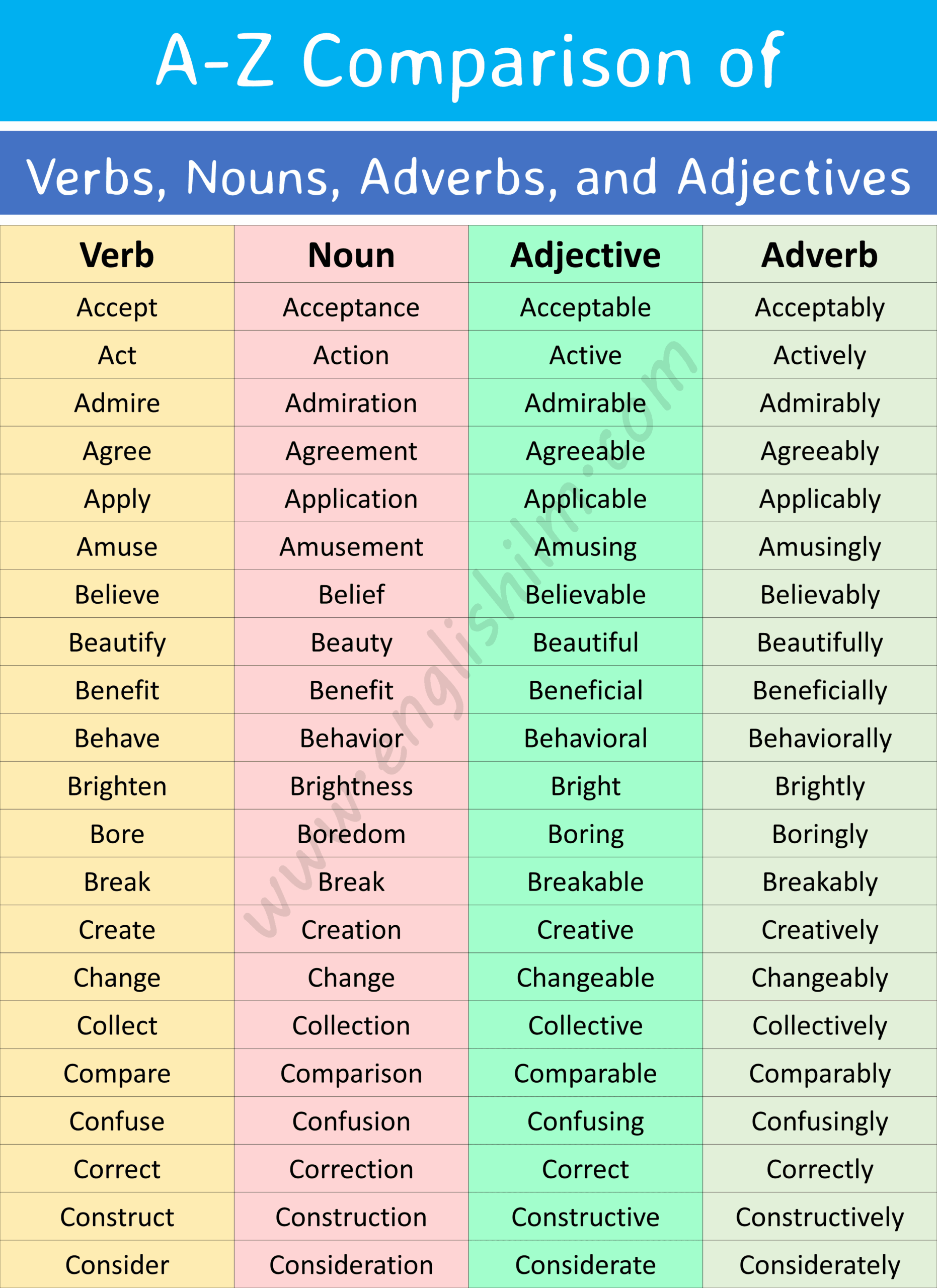Adjectives, nouns, verbs, and adverbs are essential parts of speech that work together to add depth and meaning to our language. When used effectively, they can enhance the clarity and impact of our communication. Let’s delve deeper into the significance of using these elements in our writing.
Adjectives are words that describe or modify nouns, adding detail and specificity to our sentences. Nouns, on the other hand, are the names of people, places, things, or ideas. Verbs express actions, states, or occurrences, while adverbs modify verbs, adjectives, or other adverbs by providing information about how, when, where, or to what extent.
The Importance of Using Strong Adjective Noun Verb Adverb Combinations
When we pair strong adjectives with nouns, we can create vivid and engaging descriptions that bring our writing to life. For example, instead of saying “the car was fast,” we could say “the sleek sports car zoomed down the highway.” By using descriptive adjectives like “sleek” and “sports,” we paint a more detailed picture in the reader’s mind.
Verbs are the driving force behind our sentences, conveying the action or state of being. When we select powerful verbs, we can make our writing more dynamic and engaging. For instance, instead of saying “she walked slowly,” we could say “she sauntered leisurely.” The verb “sauntered” paired with the adverb “leisurely” paints a clearer picture of the manner in which she moved.
Adverbs play a crucial role in providing additional information about the verbs, adjectives, or other adverbs in our sentences. They help to clarify the manner in which an action is performed or the extent to which it occurs. By choosing the right adverb, we can convey nuances and subtleties that enrich our writing. For example, instead of saying “he ran quickly,” we could say “he sprinted effortlessly.” The adverb “effortlessly” adds a layer of detail to the verb “sprinted.”
In conclusion, the strategic use of adjectives, nouns, verbs, and adverbs can greatly enhance the effectiveness of our writing. By selecting strong and descriptive words, we can create imagery, evoke emotions, and engage our readers on a deeper level. Whether we are crafting a narrative, a persuasive piece, or a descriptive passage, paying attention to the nuances of these elements can elevate the quality of our communication.
